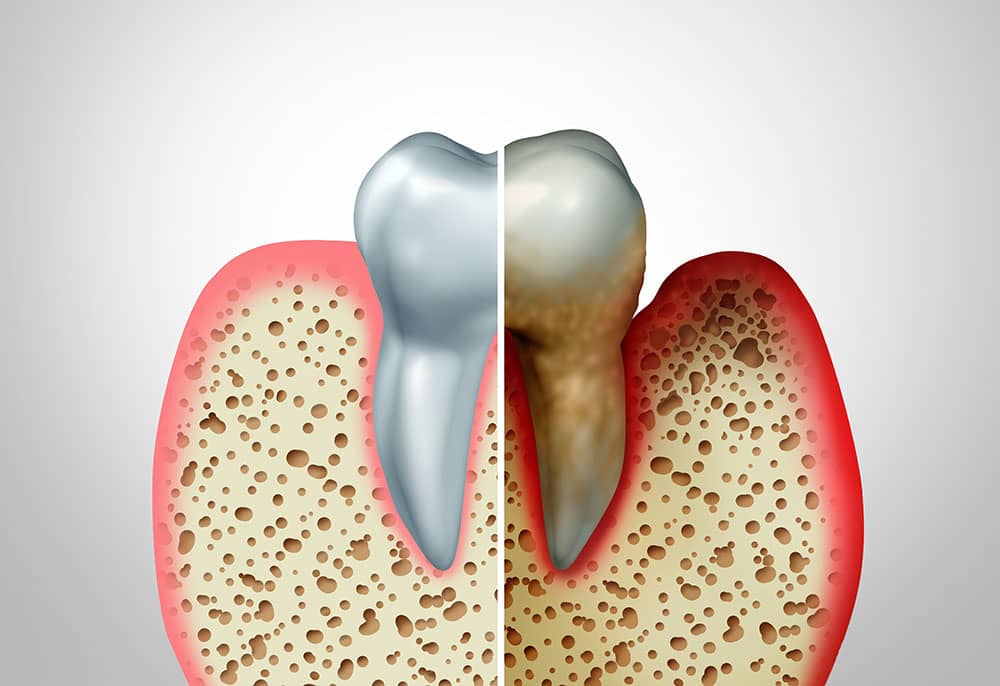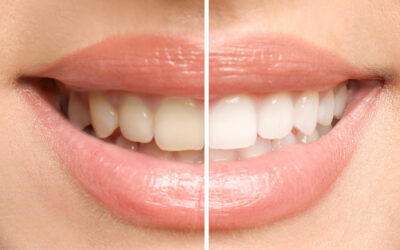When it comes to oral hygiene, teeth often get all the attention. But did you know the health of your gums is just as important? Without healthy gums, teeth do not have the support system they need.
Here, we’ll look at what gum disease is, how to recognise it, how it is treated, and ways to prevent gum disease.
What Is Gum Disease?
Gum disease is irritated, inflamed gum tissue. It can lead to an infection that damages the soft tissue surrounding the teeth. If left untreated, this serious condition can weaken or destroy the bone that supports teeth, leading to loose teeth or tooth loss.
What Are the Two Types of Gum Disease?
Gingivitis and periodontitis are the two main types of gum disease:
Gingivitis is a mild form of gum disease that occurs when the gums become swollen and red and may bleed easily during brushing or flossing.
Periodontitis is a more severe form of gum disease that occurs when gingivitis is left untreated.
What Do Healthy Gums Look Like?
Healthy gums appear firm, pale pink in colour, and fit snug against teeth.
What Are the Symptoms of Gum Disease?
Signs and symptoms of periodontitis may include:
- Gums that bleed easily
- Puffy or swollen gums
- Gums that are tender to the touch
- A toothbrush that is tinged pink after brushing
- Purplish, bright red, or dusky red gums
- Bad breath
- Pus between gums and teeth
- Pain while chewing
- Spitting out blood after flossing or brushing
- Loose teeth
- Tooth loss
- A change in how your bite fits together
- Receding gums (gums that pull away from teeth and make teeth appear longer than normal)
- New space forming in between teeth
What Causes Gum Disease?
Most often, gum disease starts developing due to plaque , a sticky film that forms when saliva mixes with sugars from foods and drinks and forms a harmful acid.
If it isn’t removed, plaque can harden into tartar. Only a dental hygienist or dentist can remove tartar. The longer tartar and plaque remain on the teeth, the more damage they can cause.
What Are the Risk Factors for Gum Disease?
Factors that increase susceptibility to gum disease include:
- Poor oral hygiene habits
- Smoking
- Chewing tobacco
- Hormonal changes (i.e. menopause or pregnancy)
- Obesity
- Genetics
- Nutritional deficiencies such as lack of vitamin C or poor nutrition
- Recreational drug use such as vaping or smoking marijuana
- Medications that cause changes in the gums or dry mouth
- Diseases such as rheumatoid arthritis, Crohn’s disease, diabetes, etc.
- Conditions that negatively affect immunity such as cancer treatment, HIV/AIDS, leukaemia, etc.
When Should I See A Dentist Regarding Gum Disease?
Attend regular dental checkups according to your dental provider’s recommendations, typically once every six months. If you recognise any signs of gum disease, make an appointment to see your dental provider as soon as possible. The quicker you receive care, the higher your chance or avoiding damage from periodontitis.
Because the early stages of gum disease may not present symptoms, regular dental check-ups are essential. Your dentist can help you recognise areas of your teeth you may be missing during brushing and flossing.
What Are the Complications of Gum Disease?
If allowed to progress, gum disease can lead to tooth loss. The bacteria involved in periodontitis can also get into the bloodstream through the gum tissue and negatively affect other parts of the body.
For instance, gum disease has been linked to:
- Issues controlling blood sugar in diabetics
- Rheumatoid arthritis
- Coronary artery disease
- Respiratory disease
How To Prevent Gum Disease
Good oral hygiene habits can help prevent gum disease, especially when practised consistently and from early on in life. Good oral hygiene includes:
- Regular dental check ups (at least every 6 months or as recommended by your provider)
- Consistent brushing (twice daily) with a fluoride toothpaste
- Daily flossing
- Limiting or avoiding sugary foods and drinks
- No smoking
How Is Gum Disease Diagnosed?
At a dental check-up, your dental provider will:
- Examine the gums for signs of inflammation
- Use a probe, a tiny ruler, to painlessly measure any pockets around your teeth (these pockets should be between 1 to 3 millimetres in a healthy, normal mouth)
- Inquire about your medical history, oral hygiene habits, and risk factors or conditions that may make you susceptible to gum disease
Your dental provider may also:
- Take an x-ray to identify any loss of bone
- Refer you to an expert (a periodontist) in the treatment and diagnosis of gum disease
How Is Gum Disease Treated?
The main goal of gum disease treatment is controlling infection. Treatment type and frequency will be based on the severity of the gum disease.
Regardless of treatment type, it is crucial for the patient to maintain good oral hygiene at home. Your dental provider may also suggest lifestyle changes such as quitting smoking.
Can Gum Disease Be Cured?
While gingivitis (the more mild form of gum disease) can be cured with strict oral hygiene, periodontitis cannot be cured. It is possible for periodontitis to be controlled with proper treatment and supervision from your dental provider. This can help stop or slow bone loss.
Do You Have Questions About Gum Disease?
123 Dental Is Here To Help. Our team is experienced in the gentle, effective treatment of gum disease. Please contact our friendly team of experts with any questions you have regarding gum disease or to schedule a consultation.








